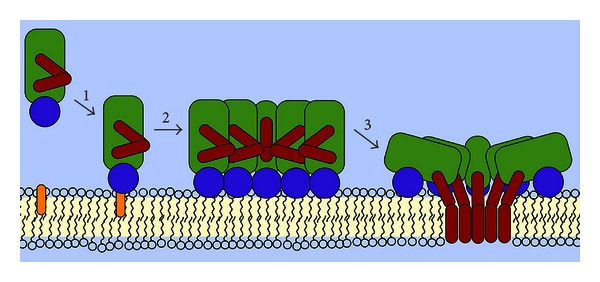Figure 2.

Pore formation is a dynamic process with structurally and functionally distinct states. Distinct molecular states exist on the path to membrane pore formation by PFTs. The toxin is secreted by the bacterial pathogen into the extracellular medium in a water-soluble form, usually as a monomer. Upon engagement of the membrane via binding to a receptor (step 1), for example, a membrane lipid or protein, the monomers assemble to a prepore oligomer (step 2). The membrane beneath the prepore oligomer remains intact and is only punctured once the prepore refolds to the membrane-inserted pore oligomer (step 3). This step usually goes along with considerable structural rearrangements.
